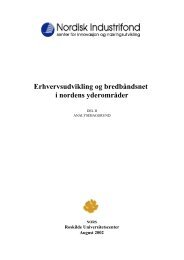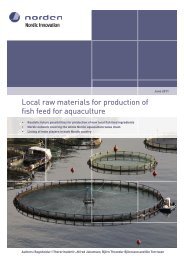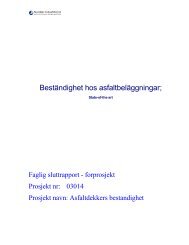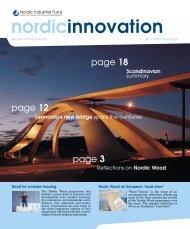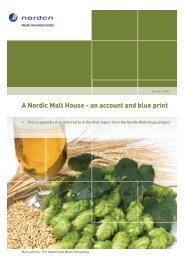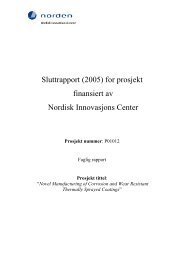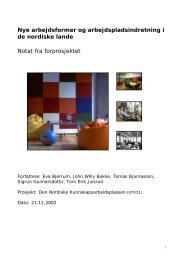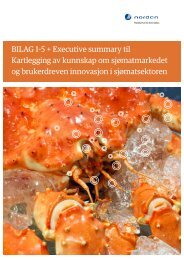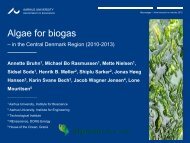Value added fish by-products - Nordic Innovation
Value added fish by-products - Nordic Innovation
Value added fish by-products - Nordic Innovation
You also want an ePaper? Increase the reach of your titles
YUMPU automatically turns print PDFs into web optimized ePapers that Google loves.
under harsher conditions. The storage modulus was increased 5 times compared to<br />
commercial cold water <strong>fish</strong> gelatin.<br />
Although the mechanical properties of gelatin from several <strong>fish</strong> species have been reported,<br />
the effect of weight average molecular weight and the molecular weight distribution on the<br />
mechanical properties of <strong>fish</strong> gelatin has only been studied to a limited extent (Gómez-Guilén<br />
et al. 2002; Muyonga et al. 2004).<br />
3.4.2 Mechanical properties of mammalian and <strong>fish</strong> gelatins based on their weight<br />
average molecular weight and molecular weight distribution.<br />
Acid porcine skin gelatins, lime bovine bone gelatins and gelatins from haddock<br />
(Melanogrammus aeglefinus), saithe (Pollachius virens) and cod (Gadus morhua) were<br />
compared according to their weight average molecular weight (Mw), polydispersity index,<br />
dynamic storage modulus (G’) and Bloom value.<br />
The dynamic storage modulus and Bloom value for all types of gelatin increased with<br />
increasing weight average molecular weight. Due to <strong>fish</strong> gelatins considerably higher weight<br />
average molecular weight and lower polydispersity, the dynamic storage moduli were<br />
comparable to the corresponding values for acid porcine skin and lime bovine bone gelatins.<br />
The Bloom values for gelatin from haddock, saithe and cod were determined to be 200, 150<br />
and 100 g. Furthermore, the data presented in this study shows that removing low molecular<br />
weight molecules from a gelatin sample increases the mechanical properties of the resulting<br />
gel.<br />
3.4.3 Mechanical properties of mammalian and <strong>fish</strong> gelatins as a function of the<br />
contents of αααα-chain, ββββ-chain, low and high molecular weight fractions.<br />
Principal component analysis (PCA) and partial least squares regression (PLSR) were used to<br />
relate the mechanical properties with the molecular weight distribution. The results suggest a<br />
linear relationship between the mechanical properties and the fractions of low molecular<br />
weight (LMW) molecules, alpha-chains, beta-chains and high molecular weight (HMW)<br />
molecules. The gel strength for cold water <strong>fish</strong> gelatin was positively correlated with the<br />
51




